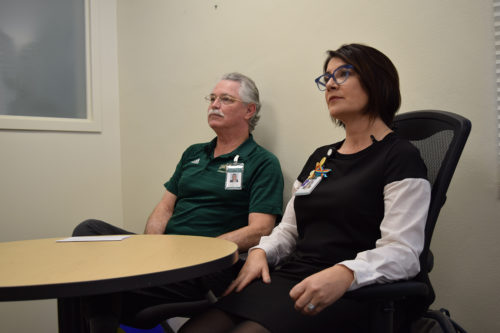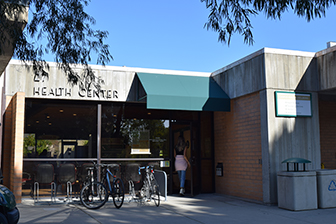The spread of coronavirus has made national news headlines since the outbreak in January. On January 30, 2020, the International Health Regulations Emergency Committee of the World Health Organization declared the outbreak a “public health emergence of international concern,” according to the Centers for Disease Control and Protection (CDC). There had not been any coverage of the outbreak in Mustang News, so our group pitched it as a multimedia piece.
“I think it is very important to use video to talk about coronavirus because most only hear or read about it, but by providing visuals to the story the viewer is able to see the reality of the severity of the disease,” journalism senior and coronavirus article contributor Natalie Young said.
We wanted to bring a local angle to the national news story by centering it around if it were to come to San Luis Obispo, but more specifically, Cal Poly. The article is split into three sections: “What is coronavirus?”, “An epidemic” and “If COVID-19 comes to Cal Poly?” This organizes the information in the article and makes it easy to follow. The article starts with the disease, its importance as it is considered and epidemic and then its relevance to Cal Poly and why students should care. We were also interested in further exploring the myths related to the virus like an article from KSBY, but did not pursue it.
“The most challenging aspect for me was definitely localizing an issue that still remains mostly far away from us,” journalism senior and coronavirus article contributor Kailey O’Connell said. “It was tough thinking about creative multimedia elements while also keeping them meaningful.”
We immediately started contacting sources that could help with the story. The Health Center was slow to respond, but we eventually got a last minute interview with Student Affairs Health & Wellbeing Medical Director Aaron Baker and Assistant Vice President for Student Affairs Health & Wellbeing Tina Hadaway-Mellis. We were also able to talk to San Luis Obispo County Epidemiologist Anne McDowell about the virus and the County Public Health Department’s plan in place to prevent it from spreading. She said there are quarantine isolation plans in place that have been improved over the years after the SARS and MERS outbreaks.
 “Most people have not seen it [coronavirus]; we call them immunologically naive,” McDowell said. “They’ve never seen this virus before, so they’re incredibly susceptible.”
“Most people have not seen it [coronavirus]; we call them immunologically naive,” McDowell said. “They’ve never seen this virus before, so they’re incredibly susceptible.”
Despite the increasing number of confirmed coronavirus cases around the world and specifically the U.S., McDowell is not worried.
“People don’t need to be quite so concerned,” McDowell said.
After talking with some Cal Poly students, we found coronavirus to be a popular topic of discussion on campus. Some students are concerned if the virus were to spread to campus, but others are not phased by the thought.
“The most important part is understanding that this isn’t some freak virus that will kill us all, but if such a virus did exist and it spread this quickly across the globe we’d be done for,” biology junior Jakob Langholz said.
Like Langholz, the San Luis Obispo community seems to show similar opinions about the virus.
“I think the most important facet to be aware of is that the virus really isn’t that large of a threat and that you shouldn’t let fear of the virus drive you to make irrational decisions,” San Luis Obispo community member Nick Dudley said.
We were also able to get some more insight from Biological Sciences Associate Professor Nathaniel Martinez.
“These viruses are generally temporal and weather dependent and there is the possibility that our mild central-coast temperatures diminish the transmission of this virus,” Martinez said. “The transition of winter to spring will likely benefit us by reducing the transmission of this virus.”
 During the reporting process, the San Luis Obispo Tribune came out with an article about a woman from Paso Robles on a coronavirus quarantined cruise ship. Sarah Arana’s two week trip on the cruise ship was extended an extra two weeks (total of four weeks) because of the quarantine. We reached out to her because she is local and wanted to hear her thoughts and learn more about her experience, but she did not respond.
During the reporting process, the San Luis Obispo Tribune came out with an article about a woman from Paso Robles on a coronavirus quarantined cruise ship. Sarah Arana’s two week trip on the cruise ship was extended an extra two weeks (total of four weeks) because of the quarantine. We reached out to her because she is local and wanted to hear her thoughts and learn more about her experience, but she did not respond.
Through our research, interviews and group discussion, our team learned a lot about the virus and the myths surrounding it.
“I didn’t know a lot about the coronavirus before working on this article so it was super cool learning about its spread and the precautions being taken in the community,” journalism senior and coronavirus article author Allison Prewitt said.
